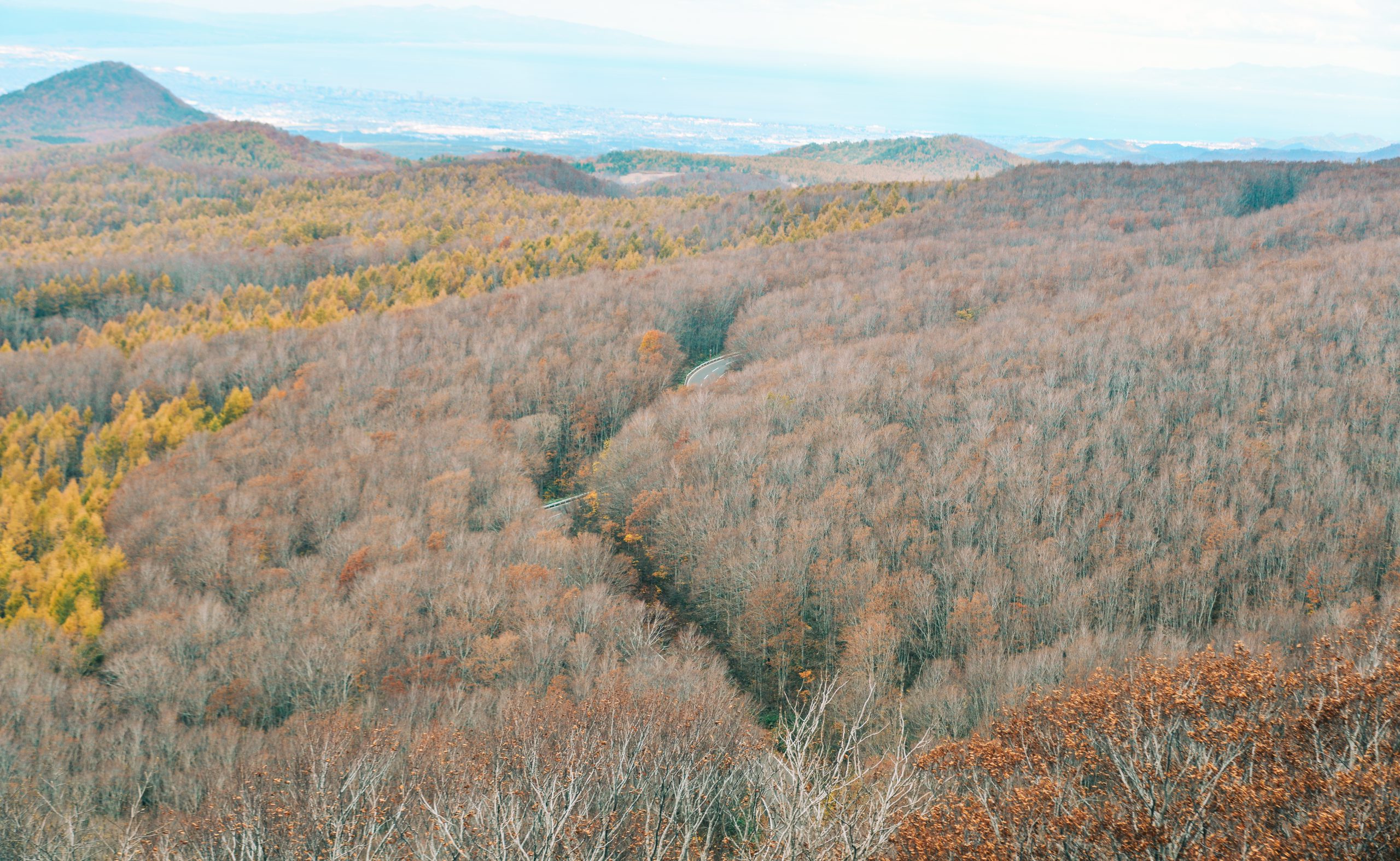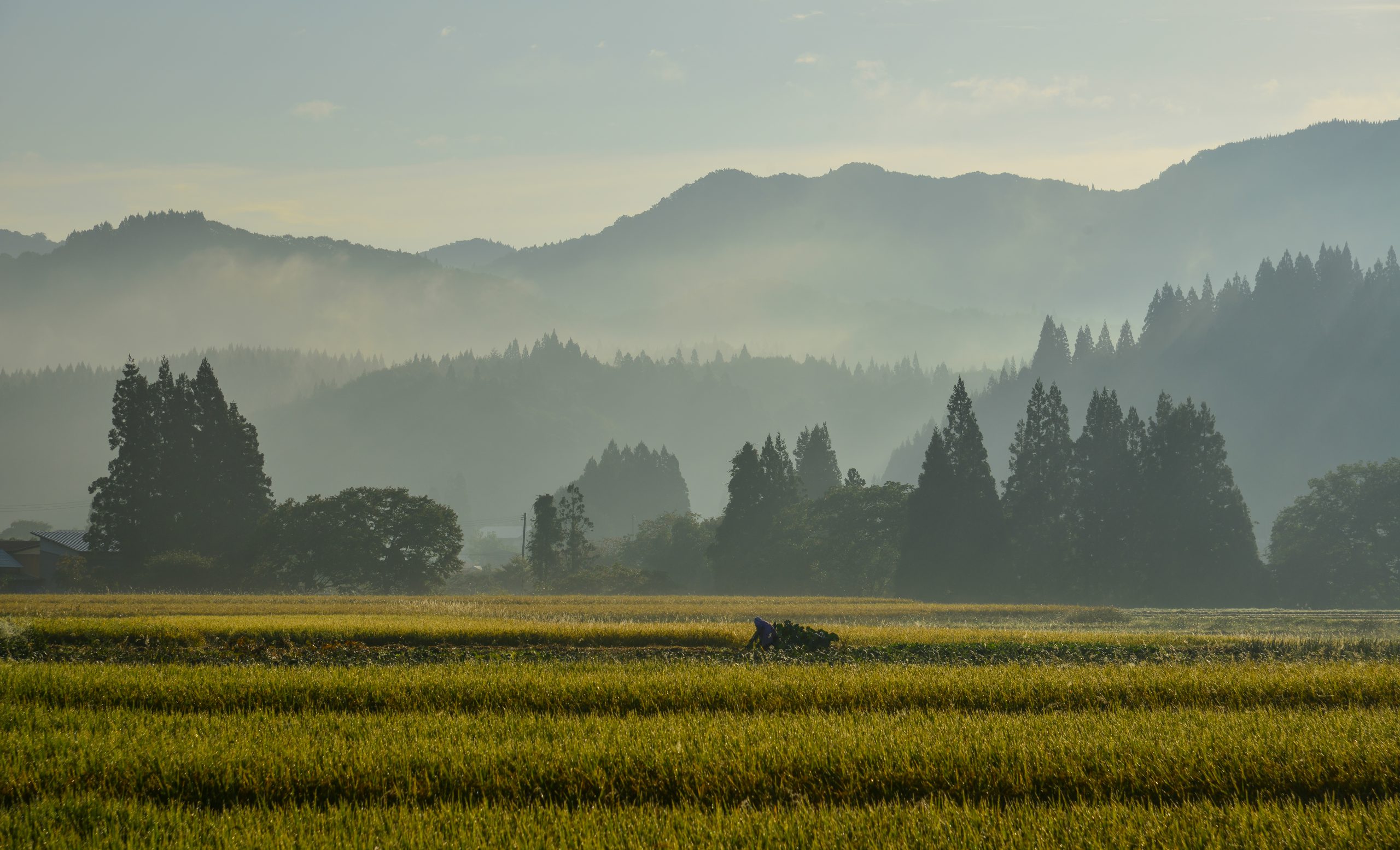Phuong Nguyen
Located in the northern part of Honshu Island in northeastern Japan, Tohoku is a vast and untamed region. The meeting point of six rural midland provinces, it is bound together by enduring customs and majestic nature.

A natural tapestry named Aomori
After a six-hour night flight on Vietnam Airlines, my friends and I landed at Narita Airport in Tokyo on a warm morning at dawn. As the first rays of light slanted through the window, we woke to see that Japan’s golden autumn had arrived.
Most foreigners associate Tohoku with the 2011 earthquake disaster in Fukushima province. Few realize that this region boasts a wealth of nature along with rich yet unexplored cultural depths. With economic development focused on the bustling Kanto region, the geographically remote Tohoku remains like a beautiful village girl hiding in a thick brown coat. Shinkansen high-speed trains now travel through the region’s most important city, Aomori, which is also the northernmost city on Honshu Island. This makes it very easy to travel from Tokyo across Tohoku.
We opted for the simplest route: boarding a high-speed train in Tokyo and going straight to Aomori. The train took just over three hours and was one of the smoothest high-speed rail experiences I have ever had. Aomori looked magnificent with exceptional nature. This rural region sits entirely in the north, with one end connecting to Hokkaido Island via the Seikan underwater railway tunnel, which runs beneath the sea bed for 53 kilometers (currently the longest underwater tunnel in the world).
Aomori is home to many scenic landscapes, including the stunning Mutsu Bay and the Hakkoda Mountains, known for their red foliage in the autumn and heavenly appearance beneath winter snow. Aomori also boasts Lake Towada, a large natural lake surrounded by towering, majestic mountains. The renowned Oirase Forest Trail lies nearby. Each autumn, the entire forest is transformed into a vibrant canvas of yellows and reds, like a living painting.
Following the advice we received at the Aomori Prefecture Tourism Center, we embarked on a day-trip. In the morning, we took a cable car to the peak of Hakkoda Mountain to admire panoramic views of the sprawling mountains and vast plains, bathed in brilliant golden hues. We trekked along the Oirase Forest Trail to reach Lake Towada.
Along the carefully laid wooden path, the foliage seemed to wrap around our feet, while a babbling brook flowed nearby and the chirping of forest birds echoed in the distance. The trees’ leaves were a vibrant mix of fresh yellows and fiery reds, while coniferous trees stood serenely amidst the rustling maples. Wild grasses and reeds jostled for space along the creek and on gentle slopes.
After trekking for 10 km, the vast, placid lake gradually came into view. Boats bobbed gently on the lake’s surface, gliding softly through the mist that rose from the water. A chilly breeze blew from the distant horizon, prompting us to quickly pull down our hoods and rush into a café for a warm cup of tea. While the long trek had left our feet numb, in return, Mother Nature treated our eyes to a feast.
After a long day, we returned to Aomori and soaked in hot spring water at an onsen resort. This soak was followed by a kaiseki(*) feast of seafood caught in the northern seas of Japan.

A natural tapestry named Aomori
After a six-hour night flight on Vietnam Airlines, my friends and I landed at Narita Airport in Tokyo on a warm morning at dawn. As the first rays of light slanted through the window, we woke to see that Japan’s golden autumn had arrived.
Most foreigners associate Tohoku with the 2011 earthquake disaster in Fukushima province. Few realize that this region boasts a wealth of nature along with rich yet unexplored cultural depths. With economic development focused on the bustling Kanto region, the geographically remote Tohoku remains like a beautiful village girl hiding in a thick brown coat. Shinkansen high-speed trains now travel through the region’s most important city, Aomori, which is also the northernmost city on Honshu Island. This makes it very easy to travel from Tokyo across Tohoku.
We opted for the simplest route: boarding a high-speed train in Tokyo and going straight to Aomori. The train took just over three hours and was one of the smoothest high-speed rail experiences I have ever had. Aomori looked magnificent with exceptional nature. This rural region sits entirely in the north, with one end connecting to Hokkaido Island via the Seikan underwater railway tunnel, which runs beneath the sea bed for 53 kilometers (currently the longest underwater tunnel in the world).
Aomori is home to many scenic landscapes, including the stunning Mutsu Bay and the Hakkoda Mountains, known for their red foliage in the autumn and heavenly appearance beneath winter snow. Aomori also boasts Lake Towada, a large natural lake surrounded by towering, majestic mountains. The renowned Oirase Forest Trail lies nearby. Each autumn, the entire forest is transformed into a vibrant canvas of yellows and reds, like a living painting.
Following the advice we received at the Aomori Prefecture Tourism Center, we embarked on a day-trip. In the morning, we took a cable car to the peak of Hakkoda Mountain to admire panoramic views of the sprawling mountains and vast plains, bathed in brilliant golden hues. We trekked along the Oirase Forest Trail to reach Lake Towada.
Along the carefully laid wooden path, the foliage seemed to wrap around our feet, while a babbling brook flowed nearby and the chirping of forest birds echoed in the distance. The trees’ leaves were a vibrant mix of fresh yellows and fiery reds, while coniferous trees stood serenely amidst the rustling maples. Wild grasses and reeds jostled for space along the creek and on gentle slopes.
After trekking for 10 km, the vast, placid lake gradually came into view. Boats bobbed gently on the lake’s surface, gliding softly through the mist that rose from the water. A chilly breeze blew from the distant horizon, prompting us to quickly pull down our hoods and rush into a café for a warm cup of tea. While the long trek had left our feet numb, in return, Mother Nature treated our eyes to a feast.
After a long day, we returned to Aomori and soaked in hot spring water at an onsen resort. This soak was followed by a kaiseki(*) feast of seafood caught in the northern seas of Japan.










